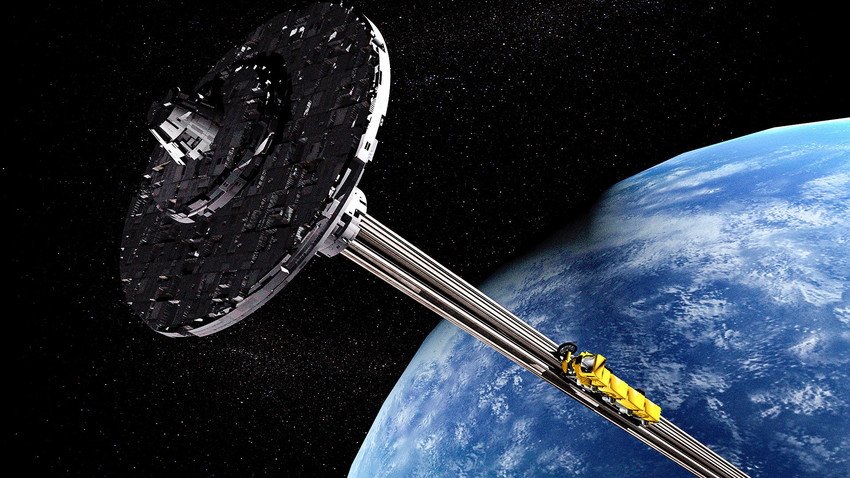Lift Industry Newsletter
September 2022
With every metric ton sent into space costing $10-30 million, it is unsurprising that many are researching more affordable ways of space travel. Once only a science-fiction fantasy, the idea of a space elevator is becoming increasingly plausible, bringing with it a possible 99% reduction in space travel costs.
Concepts include building a “ribbon” tether stretching roughly one hundred million times longer than its width, past geostationary orbit. This idea would could reduce the current price of $20,000 per kg via rocket to just $500, according to a report by the International Academy of Astronautics. An alternative by Thoth proposes instead that an elevator of just 20km high is built, which would reduce fuel costs when launching rocket trips.
However, the main obstacle for current engineers to overcome is lack of materials to support such infrastructure. An incredibly strong, dense, and flexible material is needed to build a tether capable of reaching geostationary orbit. Carbon nanotubes, diamond nanothreads and boron nitride have all been considered as possibilities, but so far no perfect solution has been found. But many are hopeful: a study published in the ‘New Space’ journal suggested the materials may be available by 2030, and the Obayashi construction company has committed to building a space elevator by 2050. So, a transformation of space travel could be possible within our life times through innovation in lift technology.
Space Elevators - The Future of Space Travel?
Source: futurism.com

